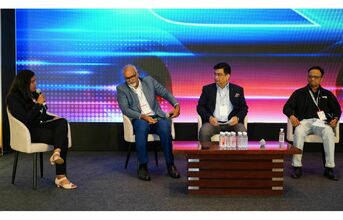
In the regulatory landscape of vehicle design, compliance with safety norms and regulations is important. When manufacturing vehicles in India for both domestic and export markets, adherence to safety regulations, including crashworthiness and interior safety tests like head impact tests, is mandatory. Raw material suppliers must be informed of these norms, and they need to confirm whether the materials meet the specified standards for a particular vehicle model.
When asked about the application of lightweighting in both Electric Vehicles (EVs) and Internal Combustion Engine (ICE) vehicles, Shiv expressed that lightweighting is a universally advantageous concept for both.
He mentioned that the charging time and battery cost are being optimised due to the lighter vehicle, which overall has a significant impact on EVs. The cost of the battery represents one of the largest elements in an EV, surpassing other considerations. The second crucial factor is compliance with CO2 emission regulations.
The CO2 regulations indicate that a lighter car results in lower fuel consumption and, consequently, fewer CO2 emissions per kilometre. It's quantified that roughly a 10 kg weight reduction leads to a one-gram CO2 reduction per kilometre. The challenge lies in the fact that every 10 kg reduction yields only one gram, making the calculations complex.
Achieving a significant reduction in CO2 emissions depends on reaching a critical mass of around 30 to 35 kg with an integrated set of suppliers. India, as a country, is slightly behind in meeting emission reduction targets. For comparison, China aims for a 60 to 65 per cent reduction, while the US targets a 26 to 28 per cent reduction by the year 2025, he added.
As the segment headed to its conclusion, the panel discussed the potential future of lightweighting in India.
Gugale envisions a future where the collective desire for a beautiful climate and a healthy lifestyle drives significant expectations in the automotive industry. The demand is for vehicles with zero emissions, maximum mileage, zero maintenance, and zero downtime. This places considerable pressure on the industry, and Gugale is committed to providing the necessary raw materials, technology, and machinery to support OEMs in meeting these demands.
He stressed that the automotive industry is dynamic, with new technologies emerging regularly. The continuous research and development efforts of OEMs, tier one and tier two suppliers, and machine manufacturers are aimed at meeting these evolving demands.
Shiv emphasised the need for collaboration, urging the elite leadership teams across the country, along with OEMs, to unite. While discussions on carbon fibre and advanced alloys are happening with various suppliers, Shiv highlighted a challenge—individual suppliers lack a critical mass, hindering progress. He proposed the establishment of forums or platforms where these fragmented initiatives could converge. The solutions and materials exist, but the cost factor, influenced by demand and supply dynamics in India, remains a hurdle.
Whether it's aluminium alloys or carbon fibres, Shiv stressed the urgency for all stakeholders to come together as a unified team, working collaboratively on lightweighting. He sees it as a win-win situation not just for the present but for the future generations.


























